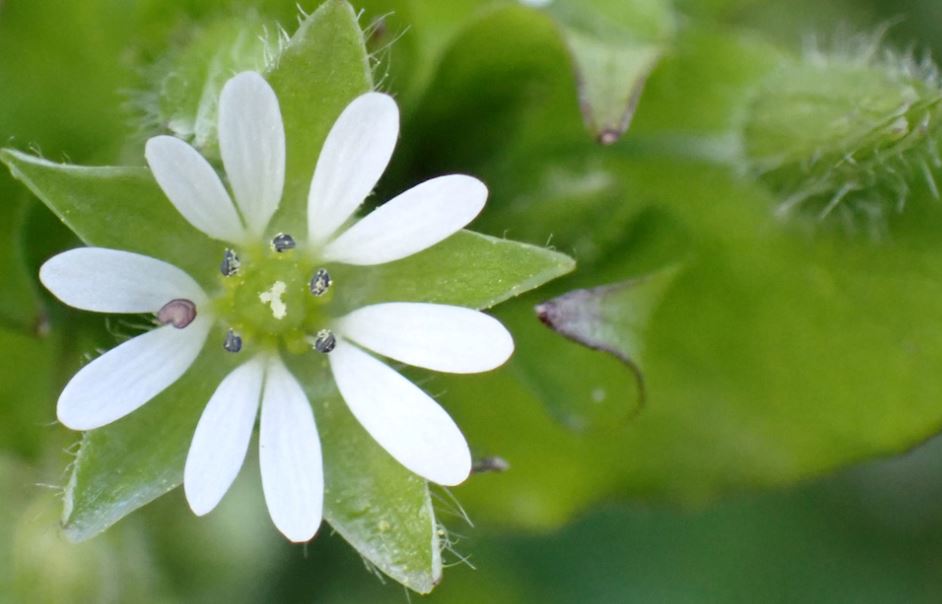
Stellaria media, chickweed, is an annual flowering plant in the family Caryophyllaceae. It is native to Eurasia and naturalized throughout the world, where it is a weed of waste ground, farmland and gardens. It is sometimes grown as a salad crop or for poultry consumption.
The name Stellaria media was published by Domínique Villars in Histoire des plantes du Dauphiné in 1789. It has accumulated a huge number of synonyms since then, as well as many putative varieties and subspecies, very few of which are accepted today. Other common names include chickenwort, craches, maruns, and winterweed.
Chickweed has small, star-shaped white flowers, which is where it gets its genus name Stellaria, from the Latin word for star. The leaves are oval with pointed tips, smooth or slightly hairy, and grow opposite each other along the stem. The plant has a weak, sprawling stem that can form dense mats on the ground. A characteristic feature is a single line of hairs that runs along one side of the stem, switching sides at each node.
Many publications state that chickweed sometimes has no petals at all, but this may be due to confusion with lesser chickweed, which used to be considered a subspecies but is now considered to be a species in its own right. The flowers quickly form capsules. Plants may have flowers and capsules at the same time.
It grows to about 5-40 cm tall but can spread extensively horizontally. Lower leaves have petioles (stalks), while upper leaves may not. They are usually light green. While beneficial, in garden settings, chickweed can become invasive due to its rapid growth and ability to outcompete other plants. It produces a large number of seeds, which can remain viable in the soil for many years.
Chickweed thrives in cool, moist conditions and can be found in gardens, lawns, agricultural fields, and disturbed areas. It’s common in temperate regions around the world. It prefers cool, moist conditions and can often be found in shaded areas or where there’s plenty of moisture. It’s often a cool-season annual, germinating in the fall or late winter, flowering in spring, and setting seed before dying off in the heat of summer, though it can be perennial in cooler climates.
Chickweed is entirely edible, from its leaves to its stems. It has a mild, slightly sweet flavor though it significantly reduces in volume when cooked. It can be eaten raw in salads, sandwiches, or smoothies, or cooked like spinach. It’s rich in vitamins A, C, D, B-complex, and minerals like iron, calcium, potassium, and zinc.
Chickweed has been used in traditional medicine for various ailments. It’s known for its soothing properties, often applied topically for skin conditions like eczema, rashes, and insect bites. Internally, it’s been used for digestive issues, respiratory conditions, and as a diuretic. The plant contains saponins, flavonoids, and coumarins, which contribute to its anti-inflammatory effects.
Control
- Hand-pulling: Effective for small infestations, especially when the soil is moist.
- Mulching: To prevent seed germination.
- Herbicides: Pre-emergent herbicides in the fall or early spring can control its spread, though this is less favored in organic gardening.